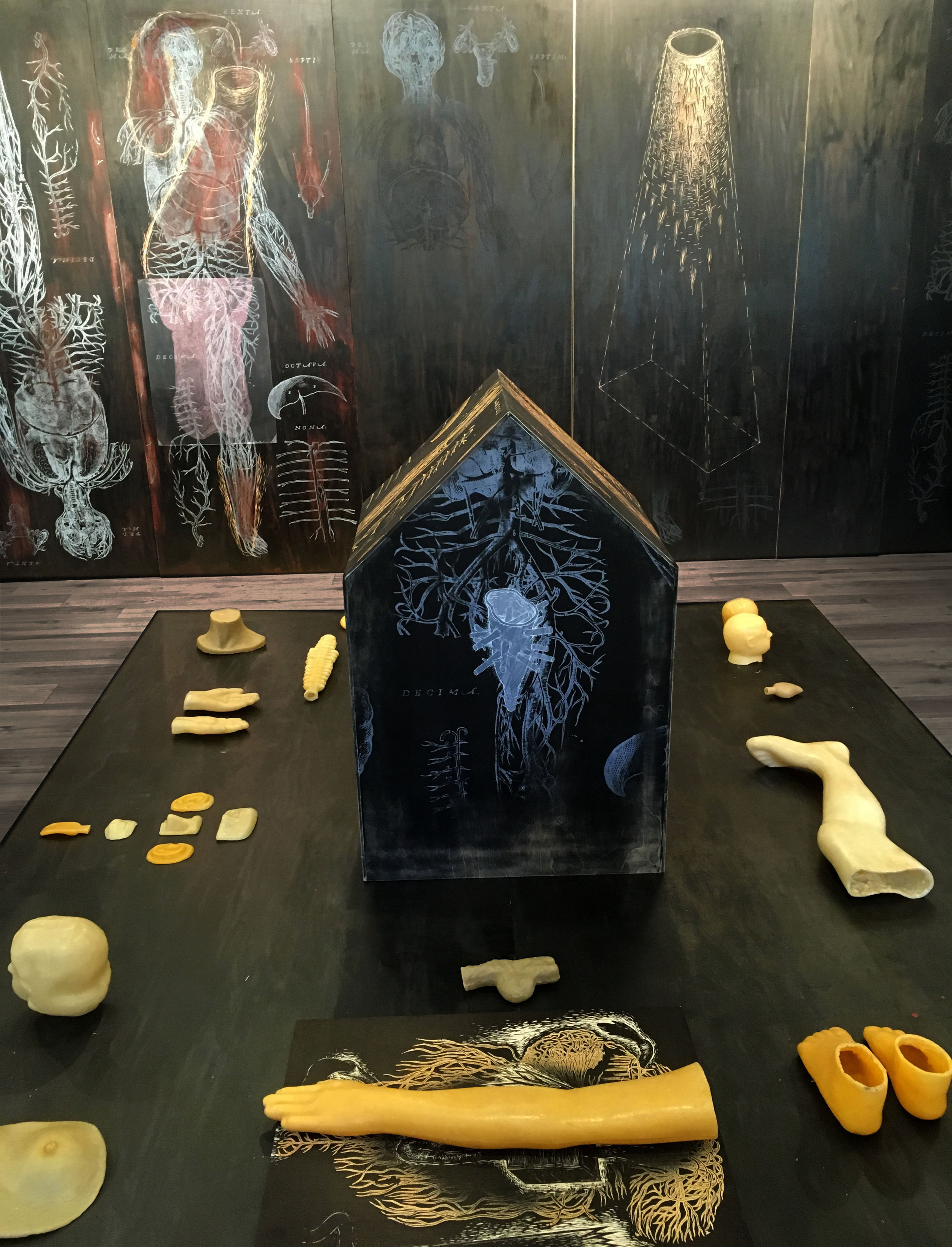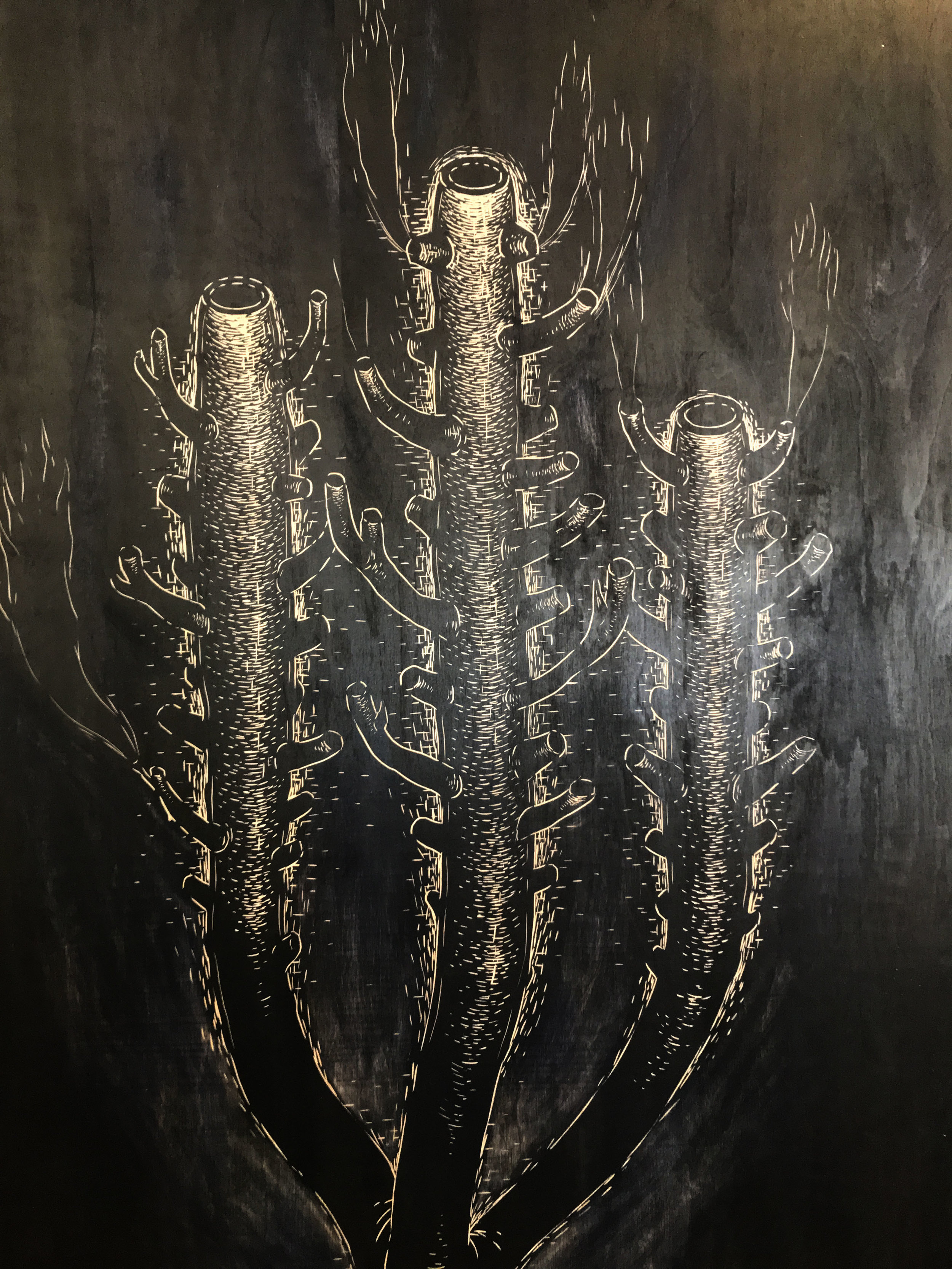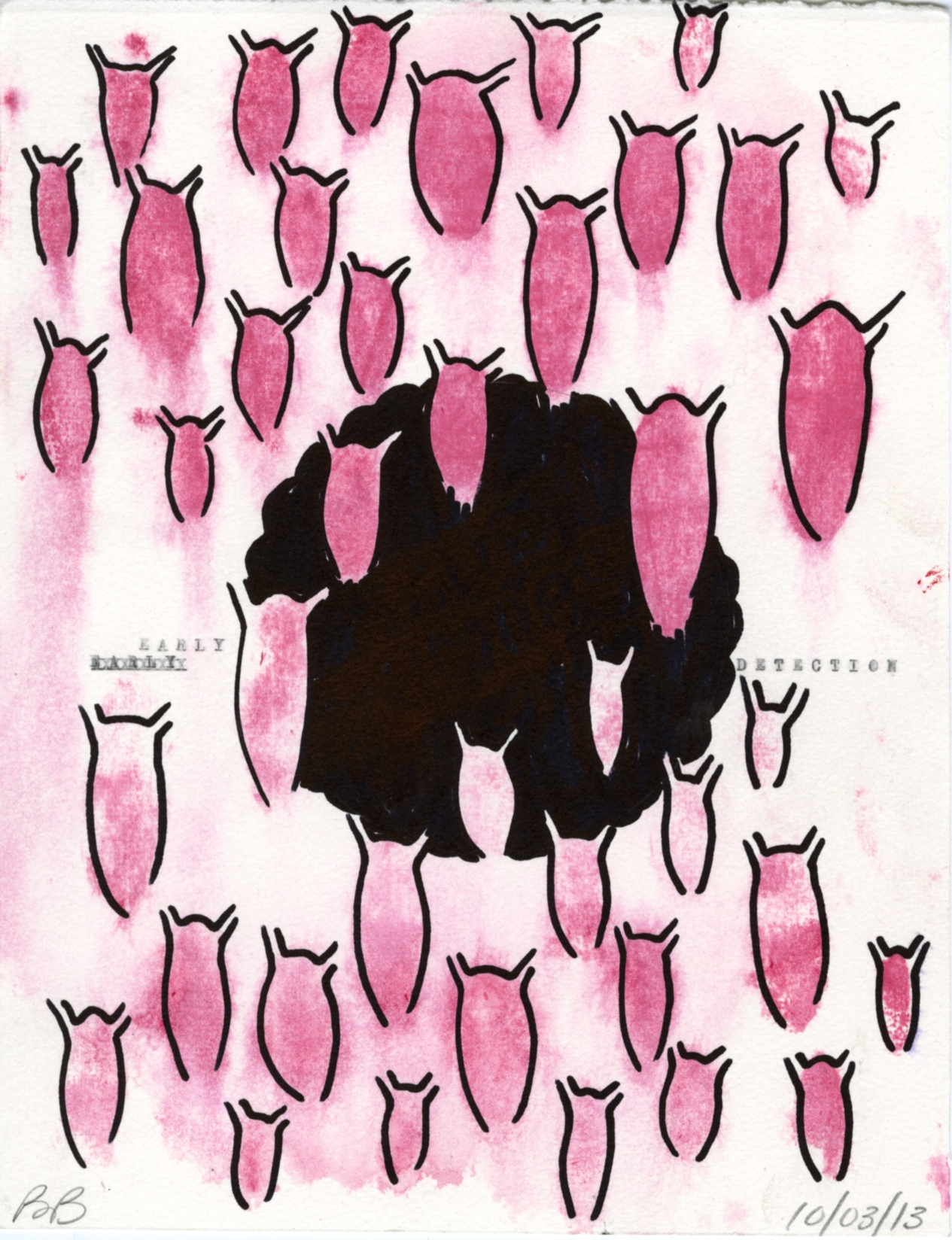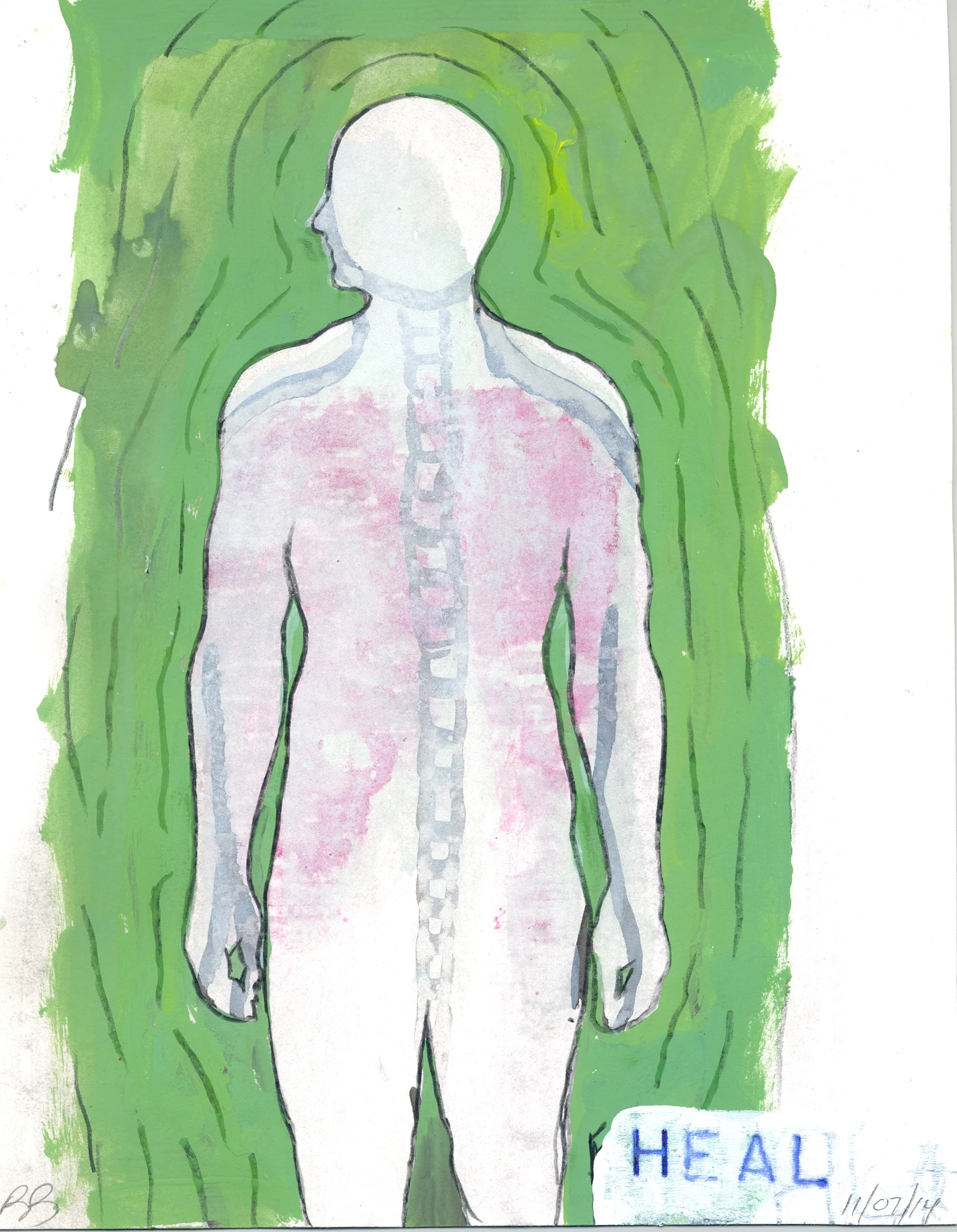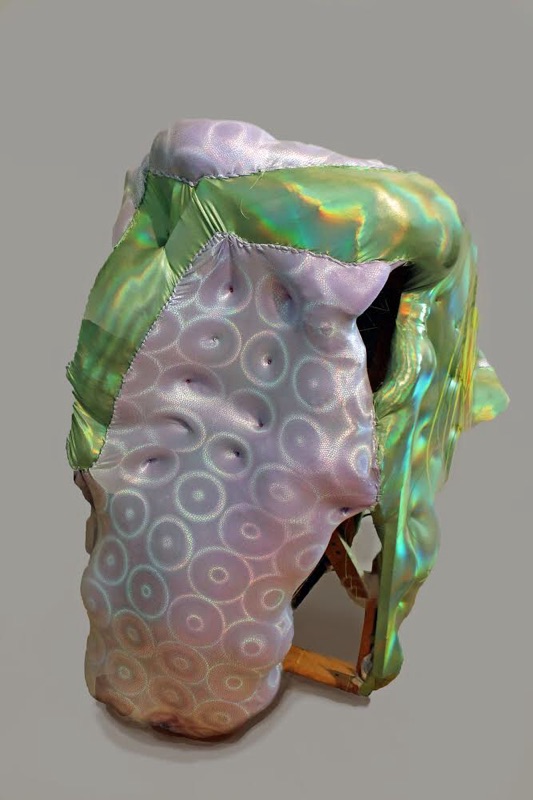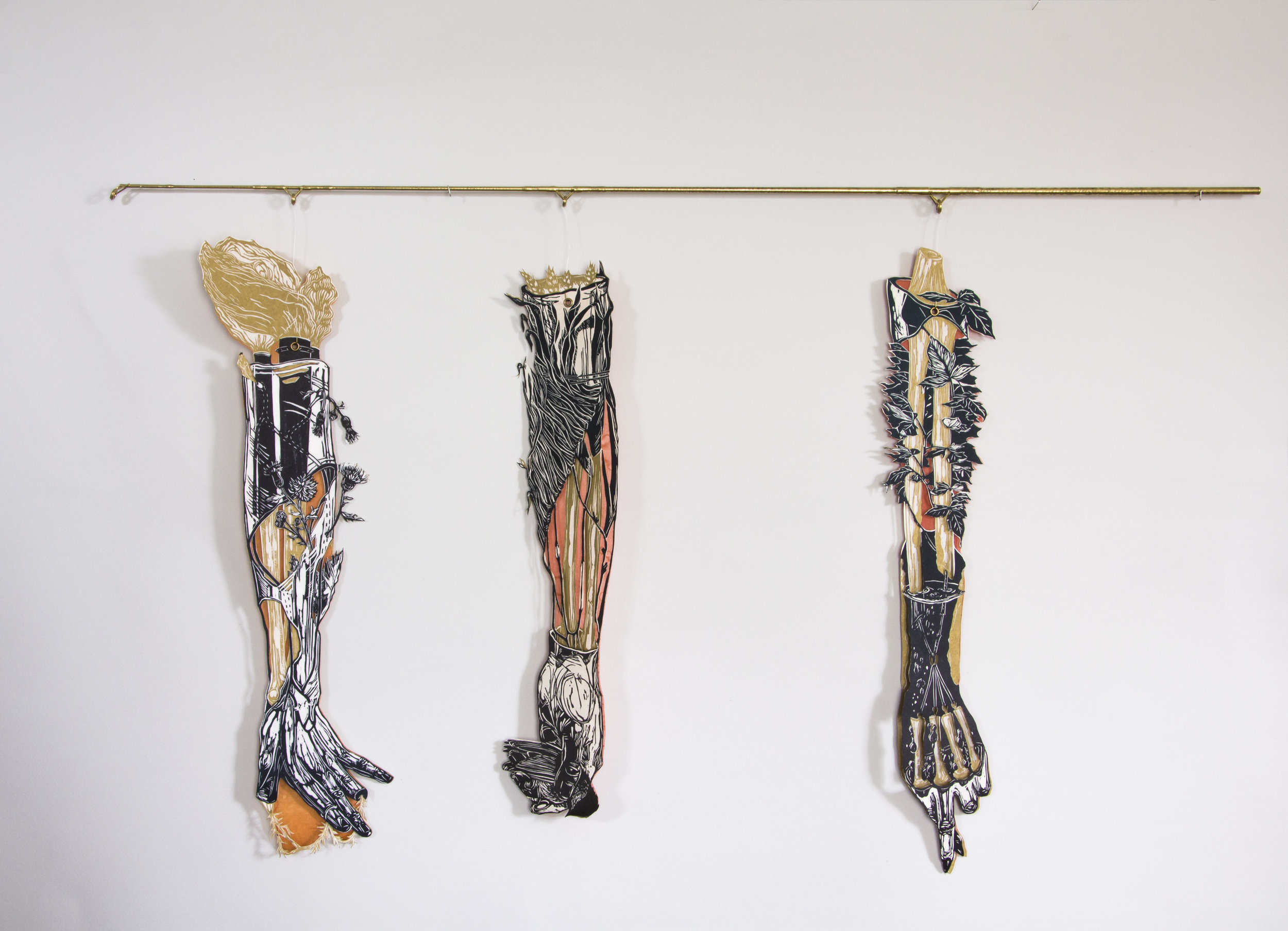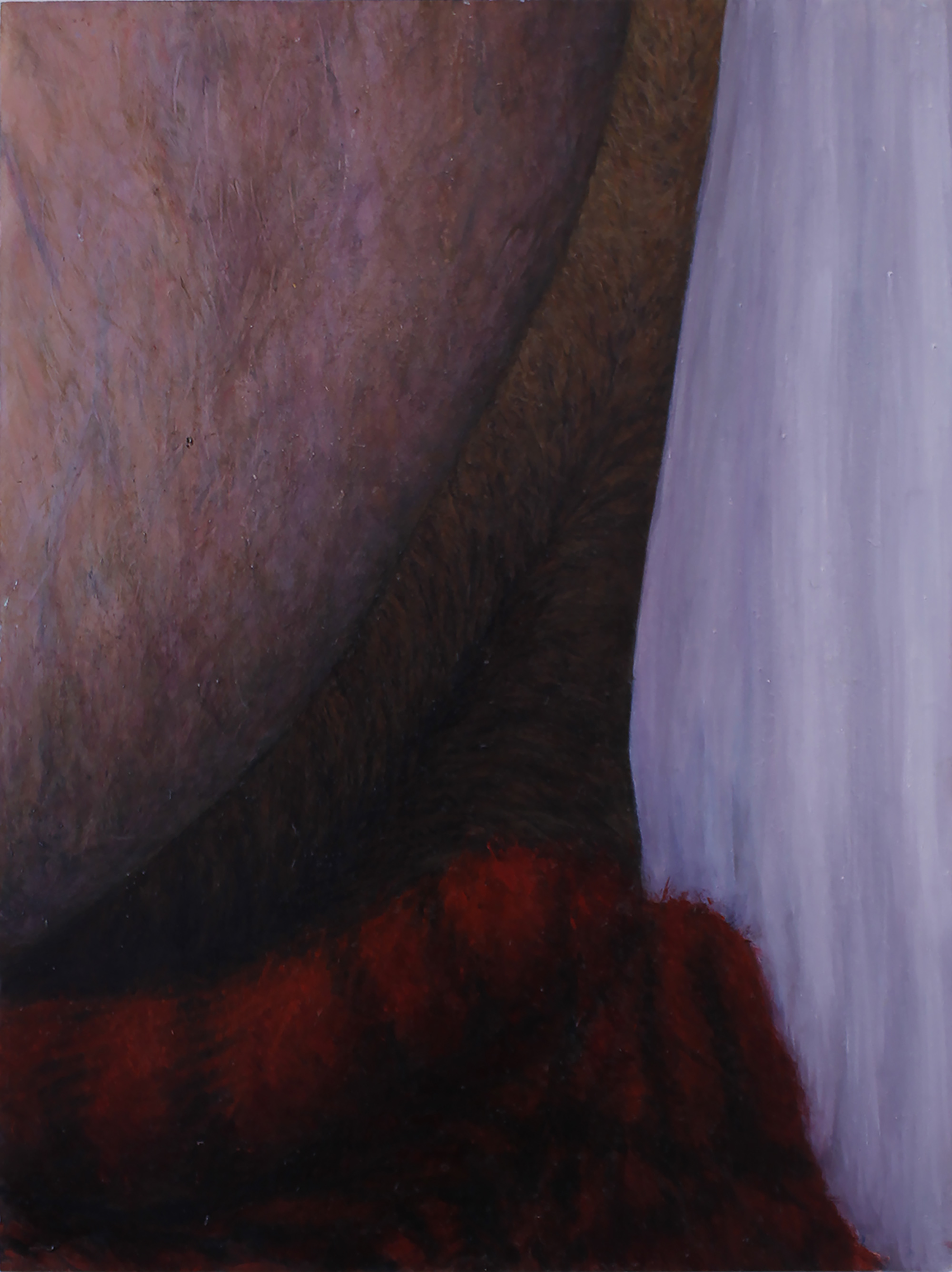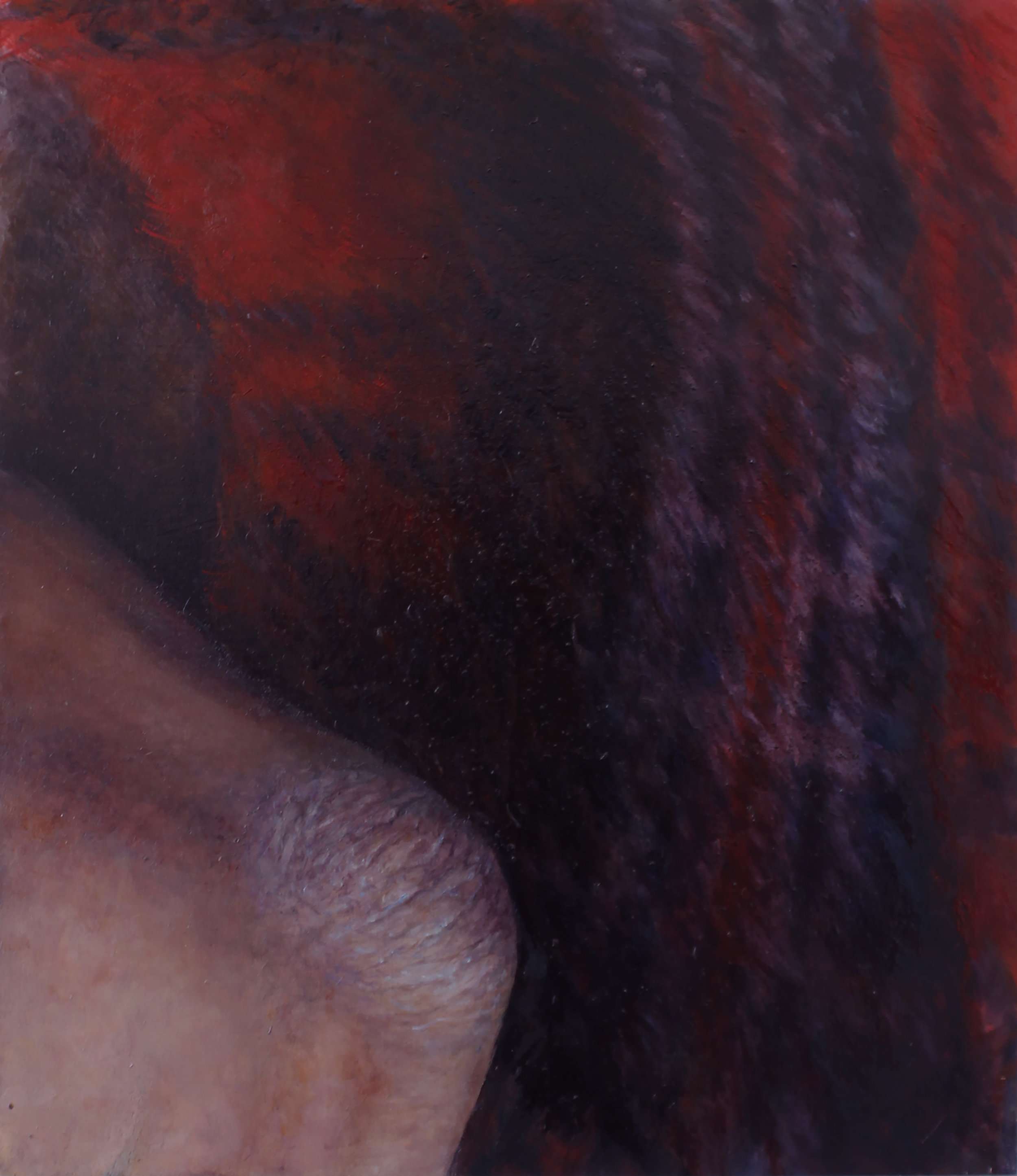
ABOUT
Sound intersects with visceral sculpture. Pulses and subsonic vibrations subterfuge the liminal surface. A wall of images illuminate anatomical representations from Renaissance to today, the past thrown back into now, transparent and visible. Images show the lucidity of illness, the subjective grinding and wearing down of the body. We live in a time when we can visualize and represent the body in ways we never imagined. But what does an image reveal?
Since Röntgen’s first x-ray of his wife’s hand in 1895, a multitude of non-invasive technologies have been developed to render the body transparent and generate digital copies of human bodies without having to cut them open. During the Renaissance, anatomists relied on artists to show the world what they had discovered. In the nineteenth century, the subjective interpretation of anatomical subjects fell out of favour as scientists strove for an objective body free from artistic contamination. MRI, CT, and ultrasound technologies facilitate just that: the artist is no longer needed to render the interior body visible; digitized machines now do it in their place. Machines now make the appearance of the body digital, transforming the body’s fleshy complexity into a simplified on/off binary. Where anatomical art once told us to “Know Thyself” as mortal or as a divine creation of God, the digital scan suggests we can Know Ourselves as virtual product.
ARTISTS
Sean Caulfield; Scott Smallwood; Marilène Oliver; 34DD; Blair Brennan; Holly de Moissac; Xi Jin; Selene Huff; Tamires Para; Nathanial Fair

